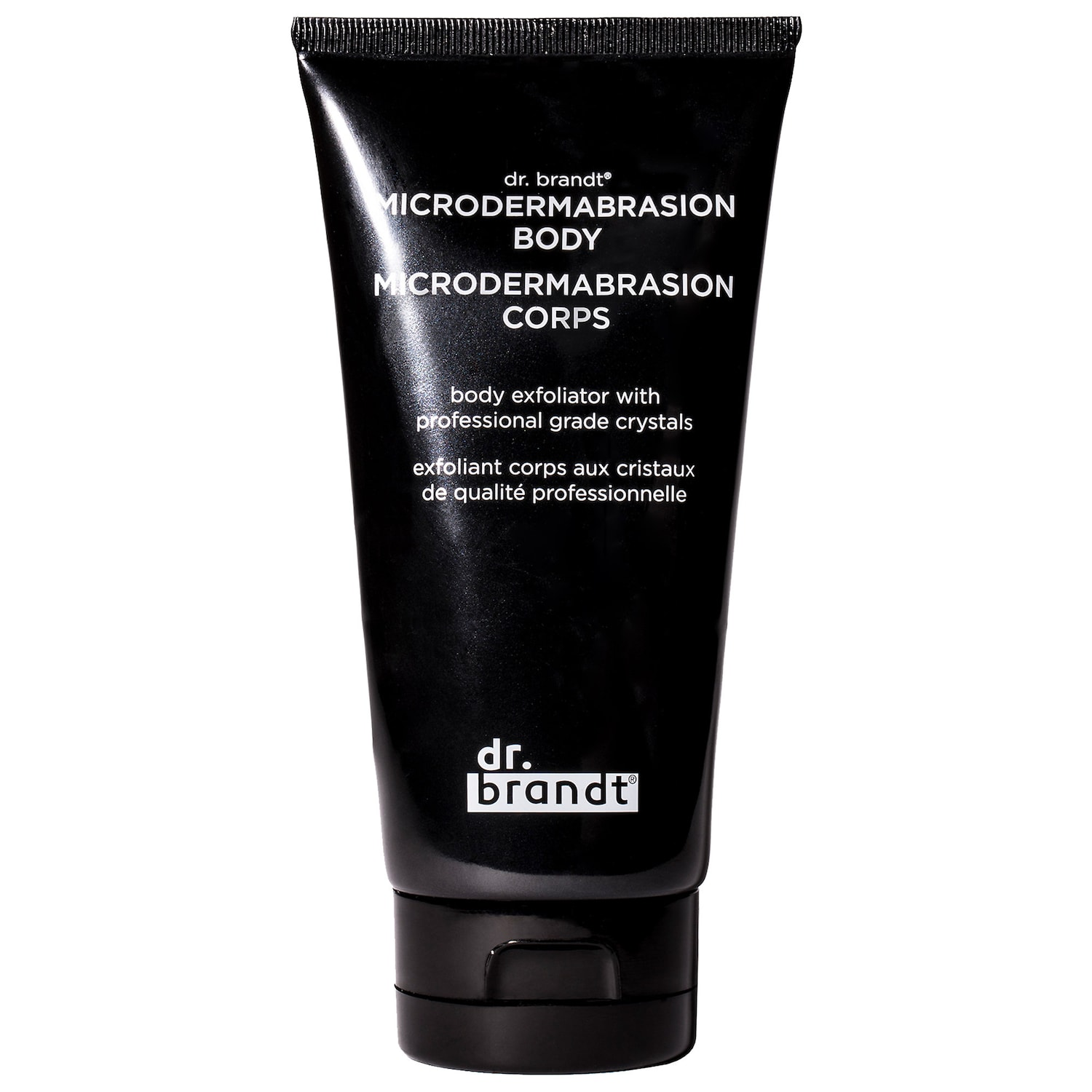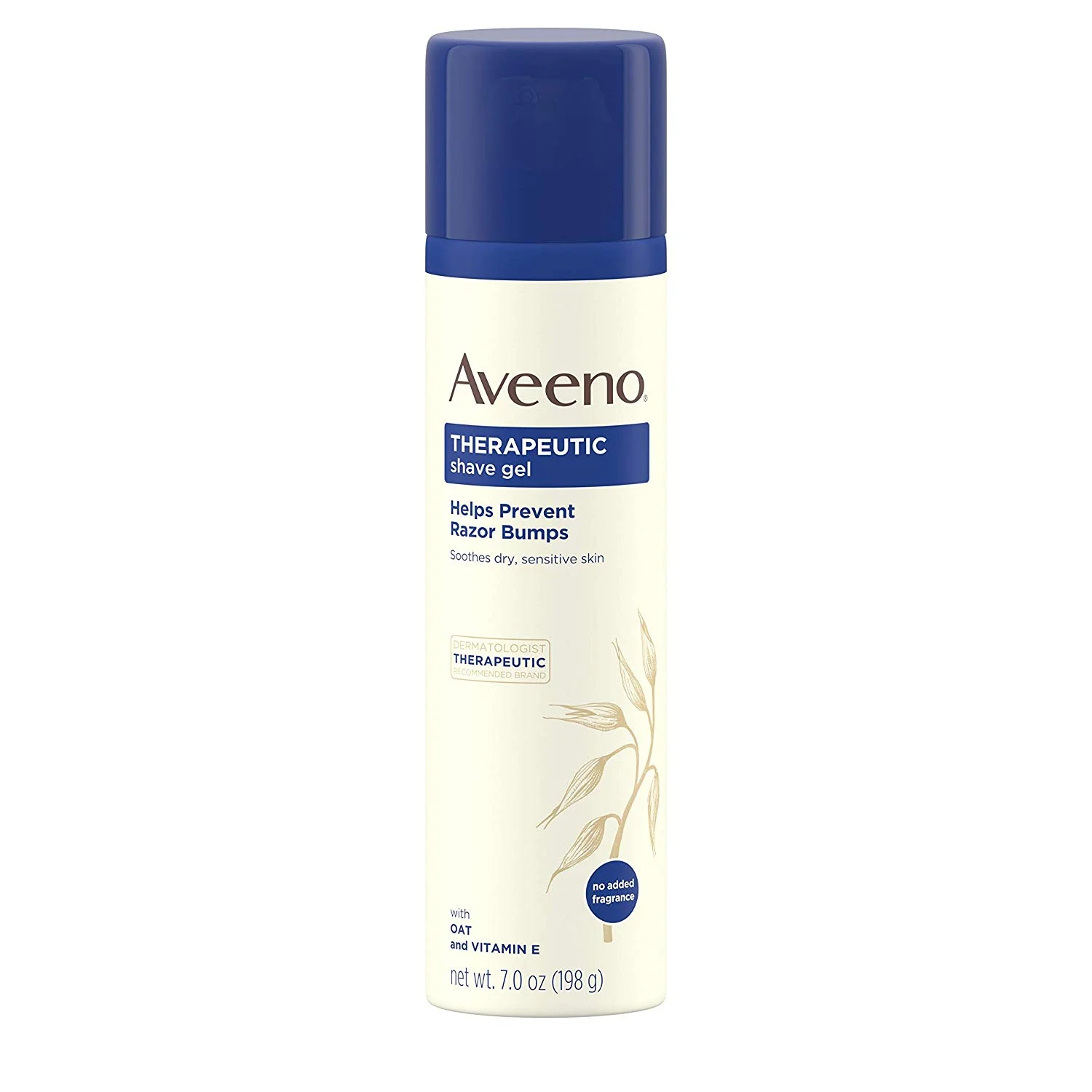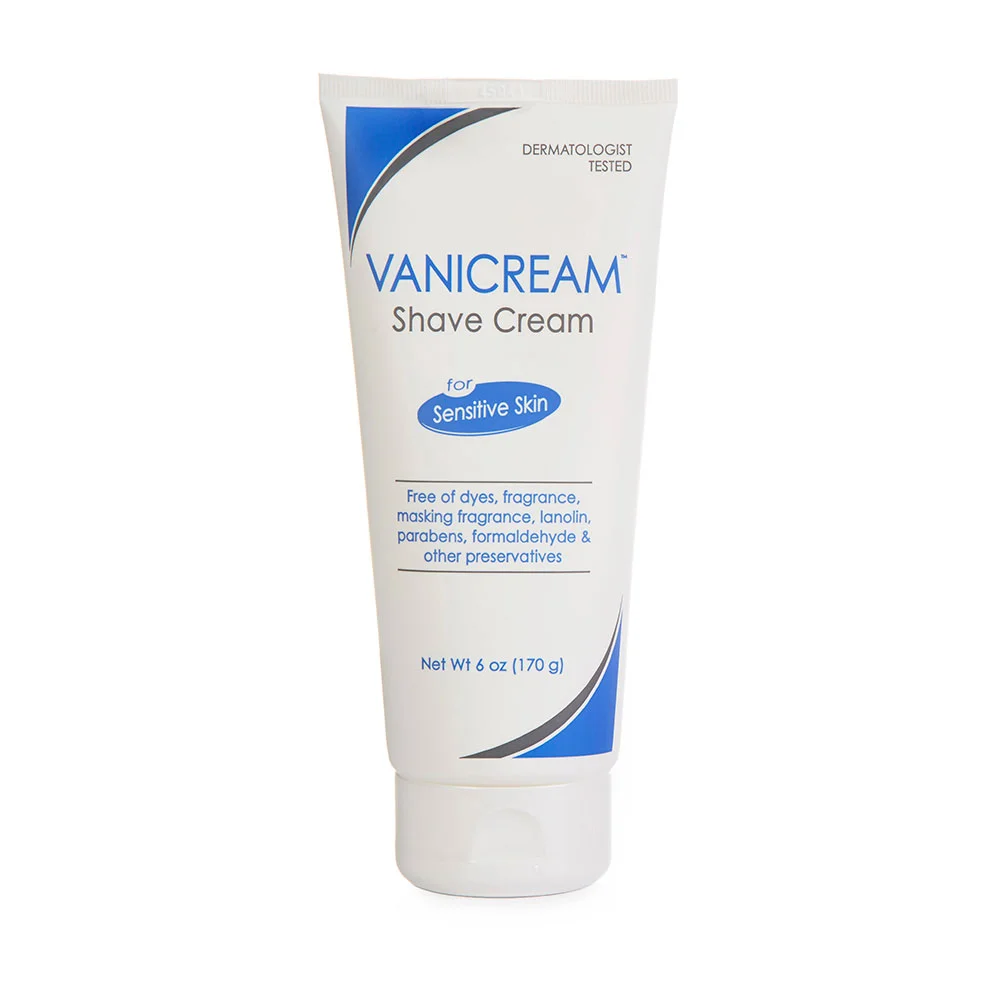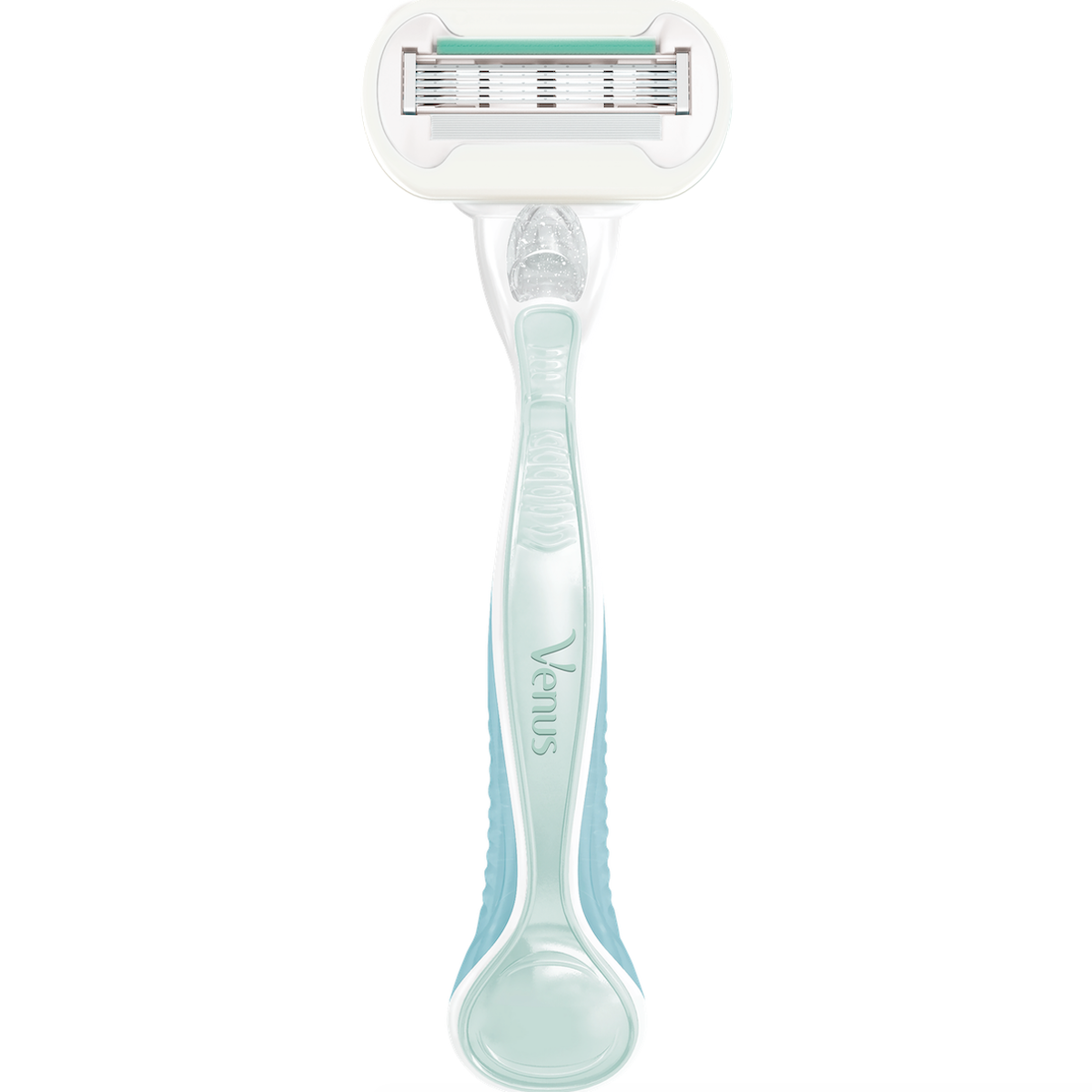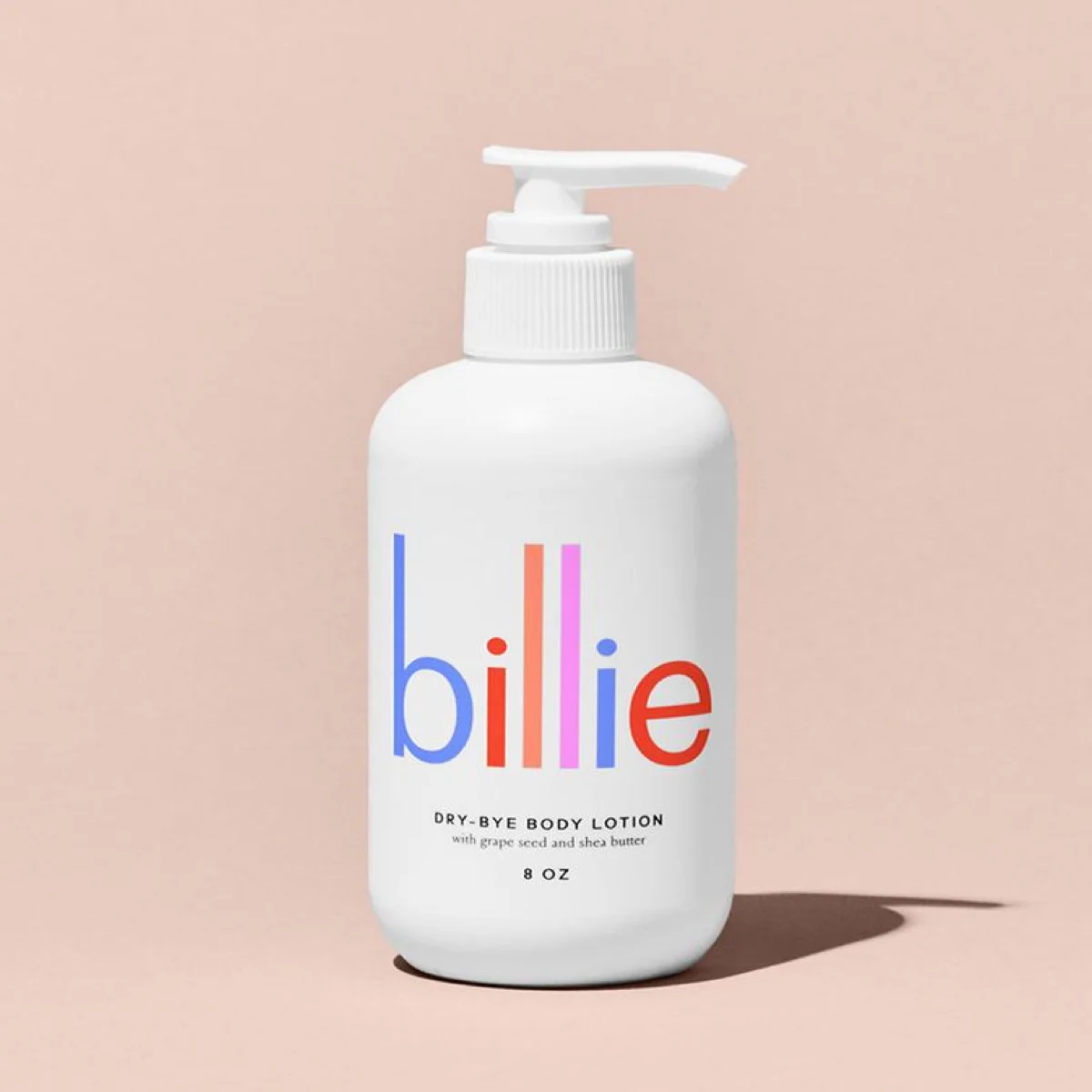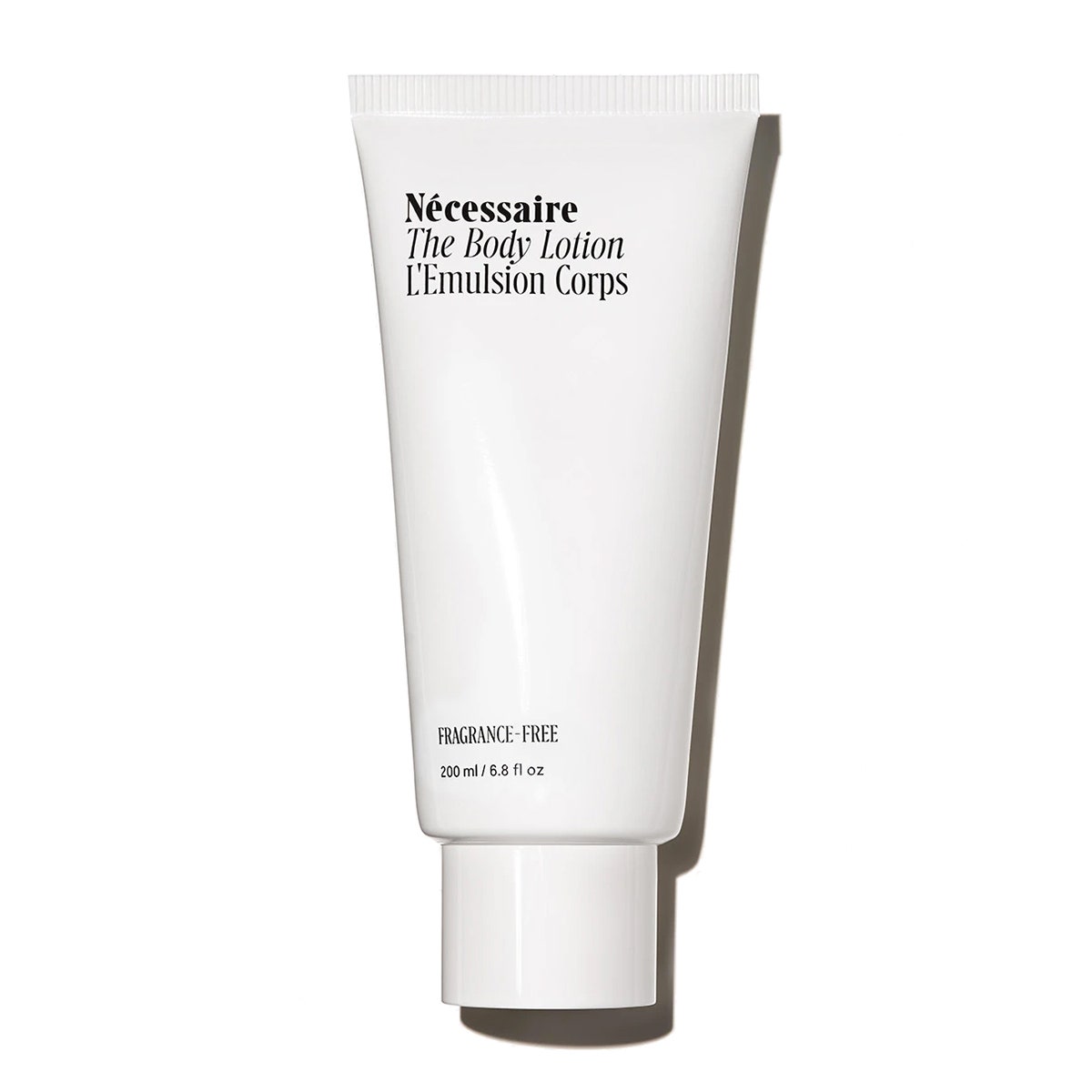
No matter what, Dr. Shirazi says, it’s important to make sure the area is clean. “Be sure you cleanse the skin before shaving,” she says.
3. Apply shaving cream or gel.
Make sure your skin is damp but not sopping wet—otherwise the shaving cream can slip off your skin. It’s better to use shave gel instead of soap or body wash since it’s specifically formulated to give razors a gentle glide.
“In general, it’s best to use a sharp razor blade and shaving cream on all areas of your body to obtain the closest shave,” says New York dermatologist Dr. Elyse Love, M.D. “This is particularly important for sensitive skin, such as the underarms and bikini line, as these areas can develop irritation with shaving if proper care isn’t taken.” Need a new favorite? Check out our list of the best shaving creams for women.
Dr. Shirazi also recommends applying creams to help soothe the area. “If you are prone to razor bumps or ingrown hairs exfoliate regularity prior to shaving using medicated pads like Clarify or a body Spray like THE ONE Spray,” she says. “You can also use a medicated cream right after shaving like SootheHC to reduce the chances of razor bumps.”
4. Shave in the direction of hair growth.
Using a fresh, clean razor (like one of these best razors for women), pull your skin taut and shave in the direction that your hair grows. Going in multiple directions with your razor can lead to cuts and serious ingrowns. “Shave in the direction of the hair using short strokes,” says Dr. Shirazi. “This helps prevent razor bumps and ingrown hairs. Avoid shaving over irritated skin patches as the friction can worsen skin conditions”
Remember not to apply too much pressure. The sharp blade should be doing the work for you. If you do need to make a second pass for a closer shave, you can go against the growth after you’ve first gone with it—this will help minimize irritation.
“Irritation if often due to the shaving technique,” says Dr. Shirazi. “Common causes or irritation or itchiness include sensitive skin, not using a lubricant or dry shaving, shaving too fast, using an old razor, over shaving with an old razor, not keeping your skin well moisturized, or shaving against the direction of your hair growth. When you shave you’re not just removing hair, but you are also stripping away the outer skin layer so it’s important to use emollients that nourish and hydrate the skin right after shaving.”
5. Rinse.
Make sure you’re rinsing the razor blade between strokes, as any pieces of stuck hair or shaving cream buildup can prevent it from working as well. (Remember, never, ever use your fingers to pull out anything stuck in your razor; otherwise, you risk cutting yourself. The water pressure from your faucet or shower should do the trick.)
For storage, Dr. Shirazi recommends taking your razor out of the shower. “Rinse the razor after each stroke and dry your razor right after shaving and store it in a dry area to prevent growth of bacteria and yeast,” she says.
6. Cleanse.
Once you’re done, gently rinse away all shaving cream with warm water, and pat dry with a clean towel.
7. Moisturize.
Here’s another step you may be used to skipping but can make all the difference: Be sure to moisturize postshave. Your skin will be dry from all the exfoliation, so rehydrate it with an unscented lotion.
Tips to Prevent Razor Bumps on Your Vagina
Now that you’ve got the basics down about how to shave your pubic area, read on for a few more pointers that’ll help you prevent ingrowns and razor burn while you’re removing hair. (Be sure to check out our list of more general shaving tips as well.)
1. Make shaving the last step in your shower routine.
Whipping out your razor as soon as you get in the shower is practically asking for a raging case of razor burn. Instead, make shaving your pubic hair the very last thing you do. It’ll give your hair follicles a chance to properly soften, which lowers your risk for irritation by a lot.
2. Change out your razor blades regularly.
Proper tools make all the difference. Use a shaving cream without heavy fragrances, and leave it on the area for a minute or two to soften the hairs. Then pick up a fresh razor and get the job done. (These are our current favorites of the moment.) Using one that’s old and worn out will at best be inefficient and, at worst, give you a rash or razor burn.
3. Invest in a good trimmer.
Owning a pair of grooming scissors or a bikini area trimmer will help you not only trim back the hair you’re not looking to shave off, but will also get you ready for a big shave if it’s been a while (if you recently had a baby, you might know what we’re talking about here).
4. Avoid dry shaving at all costs.
We’ve all been there: You get an impromptu invite to the beach or are rushing to get ready for a date and you realize—eff—you need to shave. So you prop your leg up on the sink and quickly take care of business. At the very least, take a few minutes to press a hot washcloth against the area you want to shave in order to soften the hairs and use a shaving cream to protect your skin. It’ll help ward off red bumps.
5. Avoid heavily fragranced body lotion.
Chances are your favorite body lotion is loaded up with fragrances that can irritate freshly shaved skin. Buy a product that’s specifically geared to soothe the area (be careful of men’s aftershaves, which aren’t the same thing) or use a mild natural moisturizer like aloe vera to hydrate and protect your skin.
6. Wear cotton underwear afterward.
If you can help it, don’t reach for anything made out of lace or nylon. Soft, 100% cotton underwear that doesn’t have tight elastic bands around the leg openings is ideal. It’ll give your skin a chance to breathe and recover, preventing ingrown hairs in the process.

